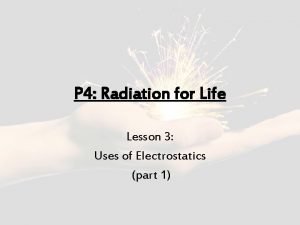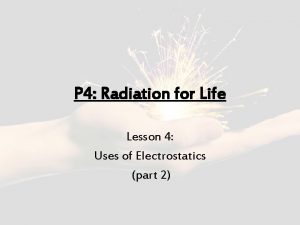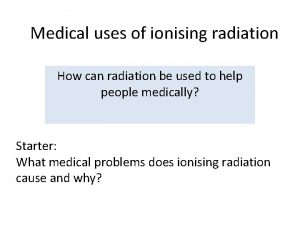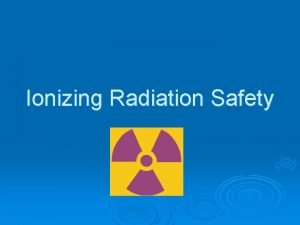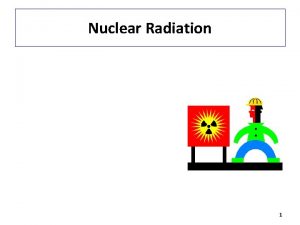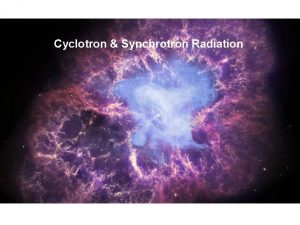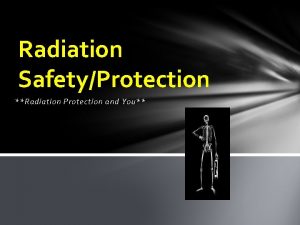P 4 Radiation for Life Lesson 12 Uses











- Slides: 11

P 4: Radiation for Life Lesson 12: Uses of Radioisotopes (part 2)

Starter Sort these out!! bracon tunco tear blunt sea crestar positoe heffalli gantire corks rutin dorush

Lesson Objectives Understand how radioactivity is used to date materials.

Success Criteria Grade E Recall that radioactivity can be used to date rocks Grade C Explain how radioactivity is used to date rocks Grade A Explain how radiocarbon dating finds the age of old materials Recall radiocarbon dating is used to find the age of old materials Key Words: radiocarbon dating • isotope • ratio • half-life • uranium

These are the preserved remains of ‘Ice Maiden’, a young woman found in 1993 in ice in central Asia. The body has been dated at approximately 2500 years old. She is so well preserved that tattoos can still be seen on her skin!

What is the halflife of uranium 238? Uranium-238 is the starting point of a radioactive series ending with lead-206 (the heaviest stable isotope). Calculating the ratio of uranium to lead means that the approximate age of the rock can be found.

Another element used in dating artefacts is Carbon, including radioactive carbon-14, is present in all living things. After the living thing dies, the carbon-14 gradually decays. By measuring how much carbon-14 remains, it is possible to calculate the time since the living thing died. Carbon 14 decays very slowly (1/2 life is 5700 years!). This means that the method can only be used to date objects that are at least a few hundred years old.

Carbon Dating • Cosmic rays enter Earth’s atmosphere and collide with atoms that release neutrons from their nuclei. The energetic neutrons collide with nitrogen atoms forming Carbon-14. The amount of Carbon-14 in the atmosphere has not changed for thousands of years Copy the above text and highlight the key words • Only a very small fraction of the carbon present in living things is carbon-14 (about 1 in every 1012 atoms) • Plants absorb carbon dioxide in photosynthesis whilst animals and humans eat plants and take in carbon-14 • When a living thing dies, gaseous exchange with the air stops; no more carbon-14 is produced • The carbon-14 present decays to nitrogen with a half-life of around 5700 years. The activity of the object gradually decreases. • By looking at the ration between carbon-14 and carbon-12 in a sample from the dead organism and comparing it to the ratio in a living organism, the age of a dead organism can be estimated. • Carbon-14 decays very slowly so the method is not suitable for dating organisms that are a few hundred years old. Higher

Dating materials using half-lives Question: Uranium decays into lead. The half life of uranium is 4, 000, 000 years. A sample of radioactive rock contains 7 times as much lead as it does uranium. Calculate the age of the sample. Answer: The sample was originally completely uranium… 1 half life later… 8 8 4 8 2 8 1 …of the sample was uranium Now only 4/8 of the uranium remains – the other 4/8 is lead Now only 2/8 of uranium remains – the other 6/8 is lead Now only 1/8 of uranium remains – the other 7/8 is lead 8 So it must have taken 3 half lives for the sample to decay until only 1/8 remained (which means that there is 7 times as much lead). Each half life is 4, 000, 000 years so the sample is 12, 000, 000 years old.

An exam question… Potassium decays into argon. The half life of potassium is 1. 3 billion years. A sample of rock from Mars is found to contain three argon atoms for every atom of potassium. How old is the rock? (3 marks) The rock must be 2 half lives old – 2. 6 billion years

Success Criteria Grade E Recall that radioactivity can be used to date rocks Grade C Explain how radioactivity is used to date rocks Grade A Explain how radiocarbon dating finds the age of old materials Recall radiocarbon dating is used to find the age of old materials Key Words: radiocarbon dating • isotope • ratio • half-life • uranium














